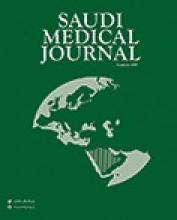Abstract
OBJECTIVES: To analyze the role of 3 polymorphisms of the renin-angiotensin system (RAS) in renal transplant recipients (RTRs) and correlate them with graft function.
METHODS: The present study was performed in the Drug Applied Research Center, Tabriz Medical University, Tabriz, Iran from September 2003 to December 2005 on 108 RTRs (66 males and 42 females, with a mean age of 37.34 ± 4.97 years) with stable allograft function (creatinine < or =2.2 mg/dl). Following the DNA extraction from the blood leukocytes, the genotypes of the angiotensin converting enzyme (ACE I/D), angiotensinogen (ANG M235T), and angiotensin II type 1 receptor (ATR1 A1166C) were determined by polymerase chain reaction. The magnitude of clearance of creatinine (ClCr) in the setting of each of the above RAS polymorphisms was determined. The ClCr was measured by modification of diet in renal disease formula. Values were expressed as mean ± SD; p< or =0.05 was considered to indicate statistical significance.
RESULTS: There was no association of each genotype of the RAS alone with ClCr, serum urea, cyclosporine through level and the degree of urinary protein excretion rate. However, patients with the DD genotype of angiotensin converting enzyme + CC genotype of angiotensin II type I receptor polymorphisms had lower ClCr (p=0.05) and a higher urinary protein excretion rate (p=0.03). Other combination genotypes of RAS had no effect on allograft function. Interestingly, the percent of hypertensive patients in the C allele (70%) was more than the A allele (30%) of ATR1 polymorphism (p=0.04).
CONCLUSIONS: Although none of the single gene polymorphisms of the RAS affected renal allograft function, combinations of these genotypes were associated with the outcome of allograft function.
- Copyright: © Saudi Medical Journal
This is an open-access article distributed under the terms of the Creative Commons Attribution-Noncommercial-Share Alike 3.0 Unported, which permits unrestricted use, distribution, and reproduction in any medium, provided the original work is properly cited.






